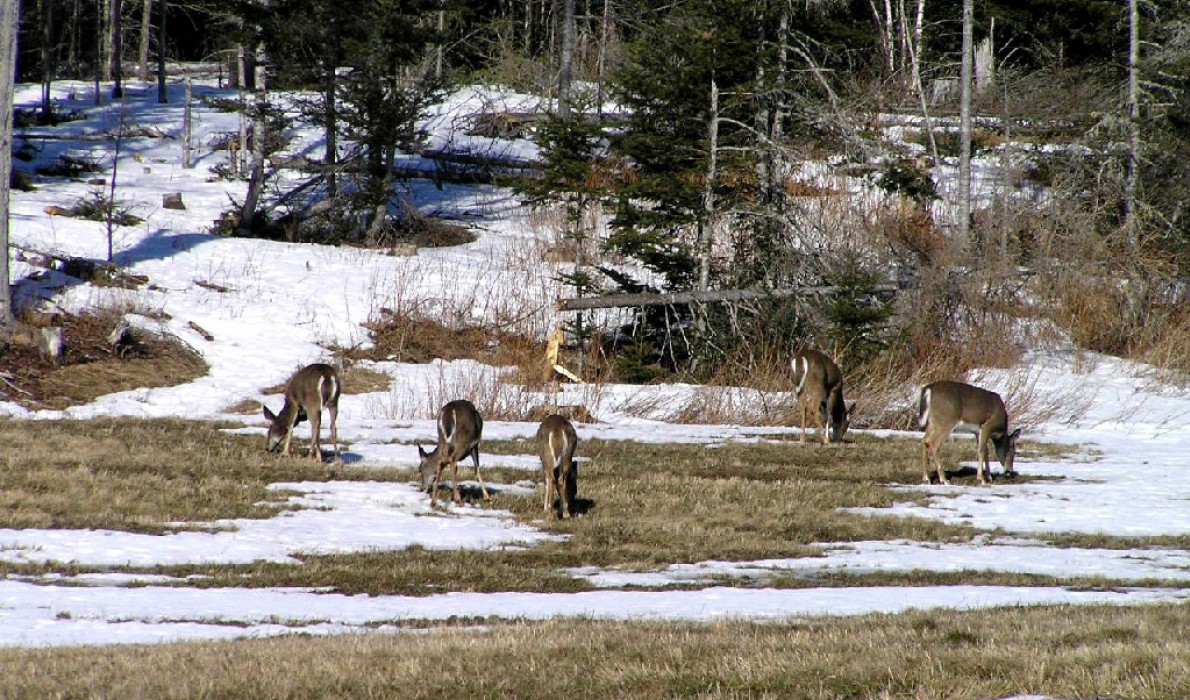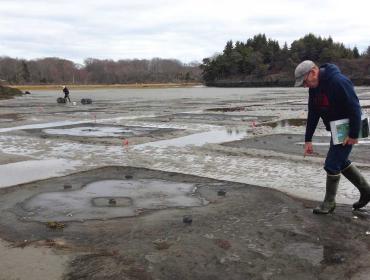Posted March 23, 2018
Last modified March 23, 2018
With as many as half the ticks on Swan’s Island infected with Lyme disease, state officials approved a special hunt to reduce the deer population, the primary host animal for the ticks. The hunt concluded on March 1.
Department of Inland Fisheries & Wildlife biologist Thomas Schaeffer said a study found that about 50 percent of ticks on the island were infected with Lyme spirochete. A bigger concern to residents was that last year, ticks infected with the deadly Powassan virus were discovered on the island.
After getting state approval for the hunt, selectmen and the town’s deer committee chose 14 island hunters from a group of volunteers, said Selectman Sonny Sprague. The town officials conducted background checks on the volunteer hunters before approving them. The town then selected ten sites to place food to attract the deer. The hunters were limited to shooting from positions close to the food stations.
The state issued permits to the hunters, and the special season ran from Feb. 7 to March 1. Just two deer were killed.
“It hasn’t been very successful,” Sprague said. If the town is able to get the special hunt renewed next year, he hopes it would begin in December.
Surveys conducted by Maine Medical Center Research Institute over the past several years confirm that Lyme cases have been steadily increasing. Sprague said he recently received a phone call from a woman in Chicago who visits Swan’s Island during the summer months. The woman said that both her son-in-law and a grandchild have been diagnosed with Lyme disease.
"We need to try to get Lyme disease calmed down," Sprague said. "We can't continue the way that we've been going."
Donna Wiegle, director of services at the island’s Mill Pond Health Center, also has seen an increase in Lyme cases over the past five to ten years. Other residents may be seeking treatment on the mainland, she said, suggesting an even greater prevalence.
White tail deer serve as a vector for Lyme-infected ticks, Schaeffer said, with female ticks feeding on the deer just before reproducing. The deer also transport ticks from one area to another.
After meeting with officials on Swan’s Island and seeing the data, IF&W agreed to the special hunt. The dates selected were chosen to not conflict with the regular hunting season.
Schaeffer said by reducing the deer population, the reproductive cycle of ticks can be interrupted. Taking only two deer was disappointing, he said; the hope was to kill as many as 20. IF&W plans to continue issuing permits for special hunts on Swan’s Island for the next several years.
"It's an experimental program," Schaeffer said. "We're hoping we can reduce the incidence of ticks carrying microorganisms."
IF&W has been collaborating with Swan’s Island officials and Maine Medical Center Research Institute to develop the approach, which he said could serve as a pilot program. Tick and disease incidence data from Swan’s Island will be compared with that from nearby Isle au Haut during the next several years. Because deer hunting isn't allowed on Isle au Haut, that island will serve as a control.
Schaeffer said IF&W recently issued special permits in wildlife management district 27 (eastern Hancock and Washington counties) allowing the first doe hunting there in 50 years. The department received many complaints from Eastport about the high deer population. Ornamental plants, gardens, and shrubs are being destroyed and there have been many deer-related car crashes.
Unlike on Swan’s Island, though, no ticks carrying the Lyme spirochete were found in Eastport.
"We're not sure why that is," Schaeffer said.
Contributed by




